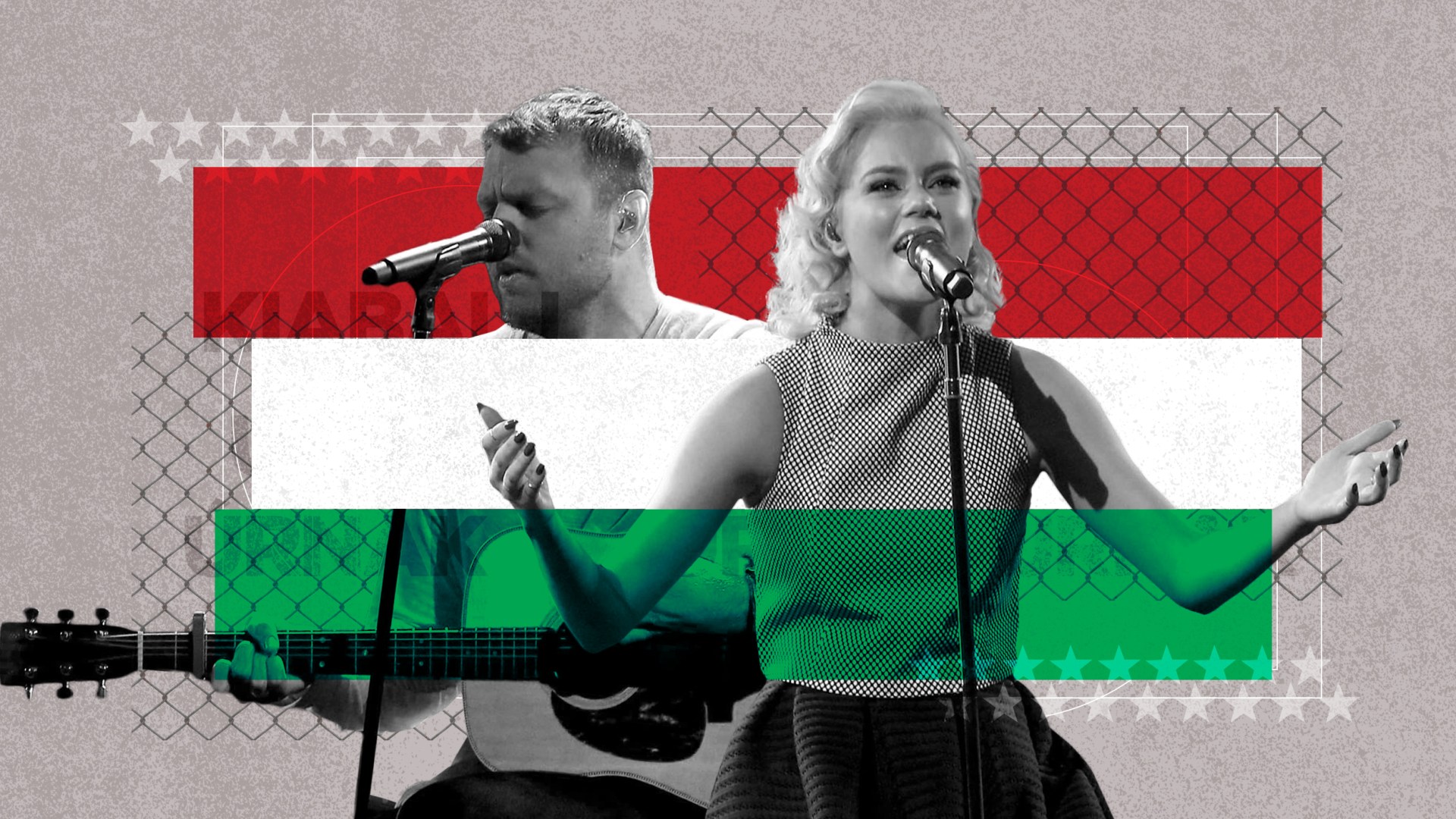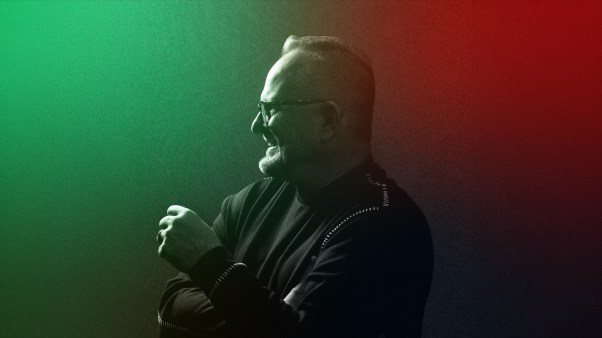“What are you saying? What are you thinking? What are you doing?” The man on stage flashes a toothy smile as he scans the thousands of concertgoers on a chilly November evening at Overlake Christian Church, a nondenominational megachurch pastored by Mike Howerton and located east of Seattle, near the headquarters of Microsoft. Last fall, Brian Houston, cofounder and global senior pastor of Hillsong Church, headlined the US-based There Is More tour , incidentally also the name of his 2018 Christian living title and worship album, recorded live at the Sydney, Australia, location.
The Hillsong music itself, with such singable titles as “Mighty to Save” or “I Surrender,” cuts across denominational lines. But in certain cultural or geopolitical contexts beyond Seattle or Sydney, the music has also served to subvert church and state confines. Kinga Povedák, a religion research fellow in Szegad, Hungary, notes how Hillsong’s music fueled an alternative, faith-based youth movement that resisted the tenets of socialism in her country in recent decades.
Through extensive interviews with Hungarian worship leaders and ethnographic study of Pentecostal and charismatic churches, Povedák notes the emergence of Hillsong lyrics in believers’ personal faith stories, as well as within the practices of congregations and religious rituals across various denominations. Young people, from Catholic to Baptist, all sing the same Hillsong tunes that they heard from Hillsong London’s team at a live festival or watched via YouTube, crossing lines that the government and decades of bitter rivalry had reinforced. Povedák labels it a “doubly alternative movement,” sparking “motivation and suspicion” from established church polity and society alike.
Povedák brings an historical context to this qualitative case study, tracing the origins of praise and worship music in the country from 1970s “beat masses” popular among Catholic charismatics to Christian popular music even though few foreign artists toured the country under the regime of Communist leader János Kádár, which lasted over 30 years and ended in 1989. She notes that government leaders favored atheism during this repressive period, yet more “mystical” songs spread through vast underground networks via handwritten musical scores, despite surveillance by Communist officials.
These songs, sung by “enthusiastic amateurs,” prepared the Hungarian Church ultimately to be receptive to newer music material, produced by professionals and accessible through the emerging video streaming service YouTube. Enter Hillsong’s worldwide domination of congregational music, beginning in 2005. Balázs Paksa, a Hungarian music minister, notes that “a kind of globalization of religious music that connects us, but at the same time brings uniformity” developed in Hungary—a country that few Western missionaries sought to evangelize during the height of socialism. Budapest Connect, a Hillsong congregation, now “strives for a perfect imitation of Hillsong” Sydney’s services acoustically, even acting as an intermediary for any Hungarian translation of the copyrighted lyrics, that are sent back to Australia, where they are retranslated to check for fidelity to the original song. The result is uniformity and branded continuity worldwide, emphasizing professional-quality musicianship.
In Seattle, essentially calling believers to a bigger life in Christ, Houston plays up his Aussie swagger, comparing his iconic voice to the shark Bruce in Disney Pixar’s Finding Nemo and referring to Vegemite, the quintessential ingredient from Down Under. In an event that combines an old-fashioned evangelistic crusade with a charismatic worship experience, There Is More stopped at 14 US locations with rotating worship teams, including Brooke Fraser Ligertwood, who appeared at Overlake, along with members of Hillsong United. Musical favorites such as “What a Beautiful Name” follow new titles like “Who You Say I Am,” but the half-hour message by Houston was clearly the main event.
Started by Houston and wife, Bobbie, in 1983, Hillsong has become a global phenomenon with campuses in New York (led by hipster pastor Carl Lentz), London, Copenhagen, and Buenos Aires, among others. Hillsong announced a few months ago that it plans to break from its parent fellowship, the Australian Christian Churches, affiliated with the World Assemblies of God, a denomination where Houston once served as general superintendent for the nation.
Being in Seattle, then, may indicate Houston’s outreach to Christ followers disaffected by present church models and denominational structures. It seems undeniable to the hundreds gathered that Hillsong has figured out how to market its unique vision to a place historically resistant to traditional religious models.
Using data from the Seattle New Churches Survey, Christopher James’s recent book finds encouraging signs that church planting in a city once labeled “the None Zone” (the 2016 American Values Survey found that 40 percent of the city’s inhabitants are religiously unaffiliated) can be instructive to the American church “as it navigates significant contextual change.” James serves as assistant professor of evangelism and missional Christianity at the University of Dubuque Theological Seminary. Despite Seattle-Tacoma’s designation by Barna Cities as among the most “post-church” metro areas with the highest urban atheist rate in the nation (10 percent of adults), James suggests that the city represents a “rather fertile place” for church planting.
Though he notes some weaknesses in what he labels the Household of the Spirit model of church planting, akin to the Hillsong musical style, James nonetheless acknowledges the appeal of multisensory, emotionally stirring worship for Seattleites, replete with “powerful visual images, swelling music, and psychologically savvy lighting.” Individualistic worship experiences often appeal to the imagination’s “lofty planes—sanctuaries awash in God’s Spirit, heaven’s throne room, majestic natural vistas,” whisking churchgoers away from the tedium of everyday life.
The “danger” in James’s estimation emanates from “reducing the Spirit to a supernatural reality whose primary function is to provide satisfying spiritual consumer experiences.”
One Hungarian interview subject, Botond Rozgonyi, reported to Povedák that the words are immaterial, as the majority of worshipers pay little attention to the text being sung, preferring the state the soothing music creates for a “mystic experience [as well as] the presence of God” that transcends the cognitive level.
In Hungary, Povedák explores why Hillsong music has resonated with local congregations from various theological positions—even churches less known for outwardly expressive worship. One interviewee, Ildikó Majoros, credits Hillsong with allowing Hungarians to “sing … our feelings to God” in a way reminiscent of American black gospel music but in a musical style more familiar to Eastern European ears.
The fluidity of Hillsong’s Christian theology allows different denominations to interpret the lyrics according to their respective doctrinal statements.
The appeal and adoption of the Hillsong worship practices are known pejoratively in some circles as “Hillsongization,” but ironically, Povedák appropriates the seemingly slighting term as the title of her article published in a 2017 collection of scholarly essays examining Hillsong, turning it positive and making no mention of its origins.
Gerardo Martí, sociologist of religion at Davidson College in North Carolina, points out that the term “Hillsongization” originated with Australian evangelical leader Michael Raiter in a 2008 blog post. The term has caught on in scholarly use, as it “widely resonates among liturgists who resist the narrowing of church music to Hillsong’s particular set of practices”—pushing back against Hillsong’s advance on the establishment.
But even Povedák’s reclaiming of the term is somewhat a subversive response. Her rhetorical move is reminiscent of the way that the insult hurled at the earliest followers of Jesus at Antioch, “Christians” (derisively meaning “little Christs”) became a badge of honor for members of the Way. To her, a Hillsongized church, therefore, is simply one that has embraced a certain style of music that advances an intimate view of Jesus as near and immediate to the believer, subverting traditional, top-down structures by giving interpretative rights to worshipers who make the lyrics their personal anthem to the Lord.
The volume containing Povedák’s work—edited by Tanya Riches, a lecturer at Hillsong College who maintains a research position at the University of Sydney, and Tom Wagner, a London ethnomusicologist—sets itself a lofty aim: to examine Hillsong as a sociological phenomenon. The entire collection hardly criticizes the main Aussie church or its outliers, yet Povedák’s chapter does recognize how consumerism, positive theology (emphasizing a victorious resurrection over any discussion of suffering), and slick branding have appealed to Hungarians, with the unexpected result being the spread of a music-based ecumenism across the body of Christ.
Others serving at Hillsong campuses in formerly repressive nations also note the appeal of an approach that foregrounds musical expression in Christian worship. Aaron Young, pastor of newly planted, nondenominational SEA Church in Seattle, knows the Hillsong model well, having served in Australia and as young adults pastor with his wife, Rachel, at Hillsong Church Kiev, Ukraine, at a time when Christian ministry by Western outsiders was rare.
In Kiev, the Youngs operated a small Bible school for students ages 18–40. Church services were conducted in Russian (a language the Youngs actively learned to speak), although the familiar Sydney-based tunes formed the musical repertoire. Another couple served as lead pastors running the day-to-day operations of the church, but as in all Hillsong churches, Brian and Bobbie Houston are known as the pastors under an ecclesiastical model referred to as “One House, with many rooms.” When they returned to the States periodically, they visited family living in Seattle, coming to love the city. When their time in Kiev concluded, the Youngs moved to the Pacific Northwest, desiring to plant a church with Sunday gatherings marked by the kind of heartfelt worship they had known at Hillsong.
Perhaps being new to an area reticent to embrace traditional church structures led the Youngs to draw from their Hillsong experience. Knowing that if Seattleites could connect vicariously with God in dynamic worship the way people in Kiev, the capital of formerly communist Ukraine, had, a viable church could flourish in an area known for its post-church culture (similar to Povedák’s Hungarian scenario). “People everywhere are drawn to authenticity and relationships,” said Young. “God brings life.”
To the extent that Hillsong continues to pen lyrics that shape powerful, life-affirming corporate worship encounters while bolstering an individualized faith, the ministry can count on devoted fans from Hungary to the Emerald City of Seattle.
At the eastside Seattle service, the night is punctuated with what seems like an elongated Hillsong infomercial. Between promotion for the Hillsong Bible College and an appeal for Compassion International child sponsorship, the focus is on Houston’s book, given with the purchase of a ticket for the evening. Attendees are encouraged to purchase a discount code that evening for an online simulcast to the annual Hillsong Creative Conference coming to the main Sydney location. How an Australian-style of modern charismatic worship adapts efficiently to fit social contexts as varied as Budapest (via YouTube video training for budding musicians) or Seattle (in a ticketed concert setting) is striking evidence that people everywhere crave an emotional experience of God’s presence when the church gathers to sing to him.
Martí’s extensive case study applying sociological theory to explain the success and research of the Hillsong version of contemporary Christian practice, even positing in Sociology of Religion that Houston’s ministry provides a “heuristic” for examining other emergent “ecclesial movements,” especially for how well the multisensory approach to congregational worship connects “nones” to a transcendent notion of God, given how disillusioned they are with typical church services.
For the recent “Hillsongized” concertgoers in suburban Seattle walking out of Overlake toward the closest Starbucks, humming “Oceans” and carrying Brian Houston’s new book under their arms, the worldwide Hillsong brand satisfies a felt need in their present culture perhaps unfulfilled by the traditional church and its customary channels of connecting with them.
Clint Bryan is in his second career as an assistant professor of English at Northwest University, in Kirkland, Washington. He has a doctorate in Rhetoric, Composition, and Linguistics and is ordained with the Assemblies of God (USA). Clint has been married to Sally for nearly 30 years; together they have two grown children.








